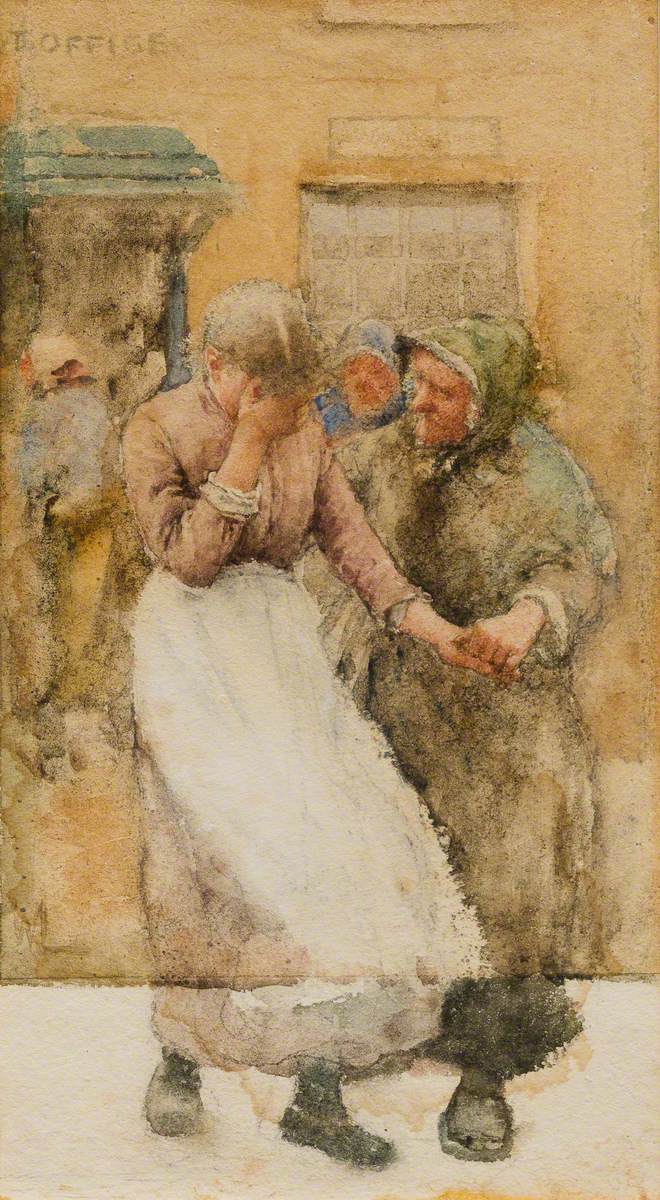Walter Langley, RI (1852–1922), often described as a pioneer of the Newlyn artists in Cornwall, was born in Birmingham in 1852. His father was a tailor, and the typically large Victorian family lived in poor circumstances. The boy attended a mission school there, taking evening classes at Birmingham School of Design from the age of ten, and becoming an apprentice to a commercial lithographer in Birmingham while still attending classes. His life might have gone on like that, only a few steps further up the social ladder than his father's. But, on his own initiative, Langley picked up watercolour painting, and showed three of his watercolours at the Royal Birmingham Society of Artists in 1873. A scholarship to the National Art Training Schools of South Kensington followed, to study decorative design, and, after another spell as a lithographer, Langley set out on his independent career as an artist.
Although he was very active in Birmingham, where he and others founded the Birmingham Art Circle, Langley was attracted by the trend established in France, to paint villagers among scenes of daily life in rural or coastal communities. In 1880, he and Henry Martin Pope (1843-1908), a fellow-founder member of the Art Circle, visited Newlyn in Cornwall, which was then beginning to have something of a reputation as an artist's colony. When Langley decided to move there with his young family in 1882, he became the first artist of any note to do so. He retained his ties with Birmingham, but eventually settled there permanently. His connection was confirmed when, after the death of his first wife, he married a Cornish woman in 1897. He died in Penzance in 1922, a well-known artist — Jacqueline Banerjee
Please visit my other blogs: Art Collector, Mythology, Marine Art, Portrait of a Lady, The Orientalist, Art of the Nude and The Canals of Venice, Middle East Artists, 365 Saints, 365 Days,
and Biblical Icons,
also visit my Boards on Pinterest and my art
stores at deviantart and Aaroko
Images are copyright of their respective owners, assignees or others.
Some Images may be subject to copyright
I don't own any of these images - credit is always given when due unless
it is unknown to me. if I post your images without your permission, please tell
me.
Ads are shown only to compensate the hosting expenses.
If you enjoyed this post, please share with friends and family.
Thank you for visiting my blog and also for liking its posts and pages.
Please note that the content of this post primarily consists of articles
available from Wikipedia or other free sources online.








No comments:
Post a Comment